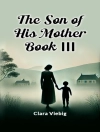In ‘Kit and Kitty, ‘ R. D. Blackmore intricately weaves a tale set against the lush backdrop of the Devonshire countryside, evoking the pastoral charm and rustic ethos of 19th-century England. The narrative deftly navigates themes of love, social class, and moral dilemmas through the lives of its two eponymous protagonists, who grapple with the constraints of their societal roles. Blackmore’s writing style is characterized by rich, vivid descriptions and a keen eye for nature, resonating with the literary traditions of the Victorian era while offering a nuanced exploration of human emotion and personal conflict. R. D. Blackmore, celebrated for his earlier work ‘Lorna Doone, ‘ drew upon his profound appreciation for the English landscape and regional dialects to create authentic characters and settings in ‘Kit and Kitty.’ His experiences in his native Somerset, combined with a lifelong passion for folklore and storytelling, undoubtedly influenced his approach to crafting narratives steeped in the complexities of rural life and human connection. Blackmore’s adeptness in portraying both the inner workings of his characters and the social milieu of his time sheds light on the evolving nature of relationships during the Victorian period. This novel is a treasure for readers who revel in character-driven narratives rich with social commentary. Blackmore’s exploration of love’s obstacles offers timeless insights, making it a compelling read for those interested in themes of personal agency against a backdrop of societal expectations. Whether you are a fan of historical fiction or looking to delve deeper into Victorian literature, ‘Kit and Kitty’ is sure to captivate and resonate.
Sobre o autor
Richard Doddridge Blackmore, often known as R.D. Blackmore, was an eminent English novelist of the Victorian era renowned for his romantic and historical novels. Born on June 7, 1825, in Longworth, Berkshire, Blackmore was an ardent scholar and a devout classicist. He was educated at Blundell’s School and Exeter College, Oxford, before embarking on a brief career as a lawyer. However, his true passion lay in literature, turning to writing after a series of unsuccessful ventures in agriculture. Blackmore’s literary style is characterized by his vivid description of landscape, a reflection of his deep love for the English countryside, and a penchant for melodrama. While he produced a decent corpus of work, Blackmore is best remembered for ‘Lorna Doone: A Romance of Exmoor’ (1869), a novel frequently considered amongst the classics of English literature and undoubtedly his crowning achievement. ‘Kit and Kitty: A Tale of West Middlesex’ is another of his works, providing a view into his versatile narratives and detailed pastoral descriptions. Despite a progressive decline in health, he continued to write until he passed away on January 20, 1900. Blackmore’s literature, often overshadowed by his contemporaries, remains integral to the canon of Nineteenth-century English fiction, offering timeless insights into the rural society and landscapes of his day. His works continue to be read and celebrated for their linguistic charm and rich portrayal of the Victorian era.












